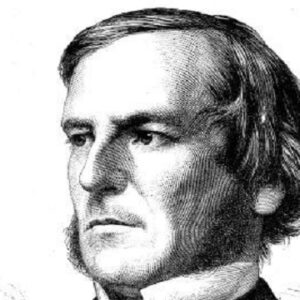George Boole, a British mathematician, and logician, invented Boolean logic. The current digital computer and other electrical gadgets are built on the foundation of this logical notion. He is regarded as one of the founders of computer science in this regard. He did not acquire much formal schooling as the son of a shoemaker, but he went on to become one of the finest mathematicians and educators of the nineteenth century. When he was forced to become the family’s principal breadwinner at the age of 16, he went into teaching and soon founded his own school. He was made the first professor of mathematics at Queen’s College, Cork, despite the fact that he had no academic education. He wrote several notable papers and treatises as a mathematician. He is also recognized for his work ‘The Laws of Thought,’ which introduced Invariant Theory, a new branch of mathematics. He made significant contributions to the fields of linear differential equations and proposed the use of algebra and calculus together. Future generations of mathematicians, such as William Stanley Jevons and Augustus De Morgan, were affected by his work and built on it. He made a name for himself as a philosopher as well as a mathematician.
Childhood and Adolescence
George Boole was born on November 2, 1815, in Lincoln, Lincolnshire, England. His parents were shoemaker John Boole and Mary Ann Joyce. He had three younger brothers and sisters.
His father coached him in mathematics and he acquired his early education in a primary school. He was a bright young man who received no formal schooling and was primarily self-taught in mathematics and modern languages.
The Career of George
He was compelled to become the family’s breadwinner at the age of 16 due to poor family circumstances and took up a junior teaching position at Heigham’s School in Doncaster. He also lectured at a few additional institutions.
During this time, he honed his mathematical skills by joining the Lincoln Mechanics’ Institution, a local mechanics institute. The Rev. George Stevens Dickson of St Swithin’s, Lincoln, gave him the calculus text of Sylvestre François Lacroix. He spent years studying mathematics on his own and eventually mastered it.
He was a hardworking young man who, at the age of 19, founded his own school in Lincoln. He took over Hall’s Academy in Waddington, Lincoln, four years later.
In 1839, he published many works in the ‘Cambridge Mathematical Journal,’ including ‘Research on the Theory of Analytical Transformations.’ These works focused on differential equations and the algebraic issue of a linear transformation, highlighting the concept of invariance.
He returned to Lincoln in 1840 to open a boarding school. The following year, he discovered Invariant Theory, a new branch of mathematics. Einstein drew inspiration from this particular mathematical idea.
He presented an important work in the ‘Philosophical Transactions of the Royal Society’ in 1844, discussing how algebra and calculus methods could be merged.
He created new views on the logical procedure and wrote a pamphlet, ‘Mathematical Analysis of Logic,’ in 1847, in which he argued that logic should be connected with mathematics, not philosophy, despite never having received formal training in mathematics.
His papers were well-received, and despite his lack of a university degree, he was appointed professor of mathematics at Queen’s College in County Cork in 1849.
He began working on logic algebra, often known as Boolean algebra, in 1854. In the same year, he wrote ‘Laws of Thought,’ which presented the broad symbolic technique of logical inference.
Because it represents the two-valued character of assertions that might look either true or incorrect, Boolean algebra serves as the foundation for examining the validity of logical propositions.
In the construction and operation of telephone switches and electronic computers, this method of two-valued character and logical elements of Boolean logic is applied.
‘On the Comparison of Transcendents, with Certain Applications to the Theory of Definite Integrals’ was published in 1857. He talked about the sum of a rational function’s residues in it. He established Boole’s identification as part of his explanation.
‘Treatise on Differential Equations’ was published in 1859. He educated people about the general symbolic method through this work. The next year, he published the sequel, ‘Treatise on Finite Differences Calculus.’
Achievements & Awards
In 1855, the Royal Society of Edinburgh awarded George Boole the Keith Medal.
He was elected a Fellow of the Royal Society in 1857. (FRS).
He has also received an honorary LL.D. degrees from the University of Dublin and the University of Oxford.
Personal History and Legacy
In 1854, George Boole married Mary Everest. They had five daughters together.
Due to illness, Boole died on December 8, 1864.
George Boole is the inventor of Boolean algebra, as well as the crater Boole on the Moon.
In various programming languages, the term Boole refers to a Boolean data type.
At University College Cork, he has a library, an underground lecture theatre complex, and the Boole Centre for Research in Informatics named after him.
Estimated Net worth
The scientist is George’s main source of income. We now lack sufficient information about his family, relationships, childhood, and other aspects of his life. In 2019, he is estimated to have a net worth of $1 million.


